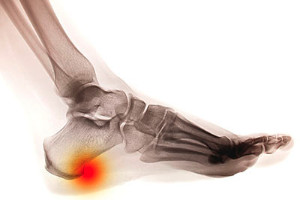Items filtered by date: June 2023
Who Is Prone to Getting Stress Fractures?

The metatarsal bones, which are the long bones in the foot that link the ankle and the toes together can be affected by a stress fracture. A stress fracture is considered a hairline fracture and generally happens from repetitive motion. People who frequently participate in running and jumping activities may be prone to getting stress fractures. It can also happen from increasing speed and distance too quickly. Additionally, people with bone conditions such as osteoporosis may easily develop stress fractures, which may be common among people with a nervous disorder caused by diabetes. The pain often begins as a constant achy feeling, which many people ignore. An increase in the pain level may push the patient to seek expert medical attention so an X-ray can be performed. Once diagnosed, treatment can begin with temporarily stopping the activity that caused the stress fracture and wearing a protective boot for mobility. If you have endured a stress fracture, it is suggested that you visit a chiropodist who can offer you the correct treatment options.
A stress fracture often requires medical attention as it can progress and worsen over time. Please consult with one of the chiropodists from Complete Family Footcare & Therapy. Our clinicians will assess your condition and provide you with quality foot and ankle treatment.
A stress fracture refers to a fine crack in a bone. This type of fracture is especially common in the feet, as they often endure repetitive pressure from daily activities such as walking or running. Stress fractures occur when the affected bone can not support the load being placed on it. Stress fractures in the foot can occur in any bone, but often affect the metatarsal bones which connect the toes to the rest of the foot, the heel bone, or the navicular bone on the top of the foot.
Symptoms
Symptoms of a stress fracture may include:
-
Deep, dull pain
-
Sharp, localized pain
-
Intermittent pain
-
Tenderness
-
Weakness
-
Swelling
-
Bruising
-
Changes in the biomechanics of the foot
Diagnosis
Stress fractures in the foot are diagnosed via medical history and a physical exam. You may also need to have diagnostic imaging tests like X-rays, MRIs, CT scans, bone scans, or an ultrasound performed to confirm the diagnosis and to rule out any other problems.
Treatment
Nonsurgical treatment options include resting, icing, compressing and elevating the affected foot, taking nonsteroidal anti-inflammatory pain medications, modifying your footwear, wearing a cast, and using crutches. Certain types of foot fractures, such as navicular fractures, respond poorly to nonsurgical treatment and may need surgery to fully heal.
If you have any questions, please feel free to contact our offices located in . We offer the newest diagnostic and treatment technologies for all your foot care needs.
Dealing With Heel Spurs

Heel spurs are calcium growths that can develop on the bottom of the calcaneus, or heel bone, usually as the result of tension and inflammation of the plantar fascia. Heel spurs are benign, and many times are not painful if they form gradually. Heel spurs that develop suddenly can be quite uncomfortable, especially right after getting up in the morning. Women are more apt to have heel spurs than men, possibly because of the type of shoes that are worn. Making changes in footwear is the first way to ease any pain from heel spurs. To address this problem, look for shoes that provide additional cushioning in the heel, or have custom orthotic inserts made to specifically fit your feet. Finding footwear with ample arch support is another method of easing the pressure on the heel bone, along with performing stretching exercises to reduce tightness in the calf muscles. Obesity and bone deformities on the foot may be other contributing factors in the development of bone spurs. To address these and other issues related to heel spurs, it is suggested that you make an appointment with a chiropodist.
Heel spurs are bony outgrowths from calcium deposits. They occur at the back of the heel bone or underneath the heel bone and usually form in response to chronic irritation of the Achilles tendon or plantar fascia. They are often asymptomatic, but if you are suffering from heel pain, please consult with one of the chiropodists from Complete Family Footcare & Therapy. Our clinicians can help you maintain the health of your lower limbs and your mobility.
Symptoms of Heel Spurs
-
Tenderness
-
Heel pain
-
Pain when walking
-
No symptoms
Diagnosis
Since heel spurs are often asymptomatic, they are usually only diagnosed when they are found on the heels incidentally during an X-ray taken for another reason. Nevertheless, if you have heel pain, and particularly if you have plantar fasciitis or Achilles tendonitis, it may be worth it to see if you have heel spurs too.
Treatment
Unless they are causing symptoms, heel spurs typically don’t require any treatment. When they are symptomatic, treatments are typically conservative. They may include resting and icing the affected foot, taking anti-inflammatory medications, and wearing orthotics or supportive footwear, especially while exercising.
If you have any questions, please feel free to contact our offices located in . We offer the newest diagnostic and treatment technologies for all your foot care needs.
Dealing With Diabetic Neuropathy

Diabetic neuropathy is a condition common to many people with diabetes. It is a numbness caused by high levels of blood sugar that damage the peripheral nerves, including those to the lower legs and feet. Symptoms of diabetic neuropathy include a loss of feeling in the feet, along with a burning and tingling sensation, muscle weakness, and in some cases difficulty walking. Men are more likely than women to develop diabetic neuropathy, and high levels of cholesterol and smoking increase the risk. There are a number of suggestions to help prevent diabetic neuropathy from becoming worse. The first is controlling blood sugar levels. In addition, following a regime of daily foot care is a good idea. Keep the feet washed, dried, and moisturized. Also, check the feet, toes, and ankles each day for cuts or sores that may become infected if left unattended. Keep toenails cut straight across to avoid ingrown toenails. It is also suggested that you make an appointment with a chiropodist for the removal of problem corns, and calluses, and help with wounds that won’t heal properly. This foot specialist also can monitor your foot health through regular visits.
Diabetes can cause serious problems in the lower limbs if proper preventive measures are not taken and diabetic wound care is not performed. If you would like to learn more about caring for diabetic feet, please consult with one of the chiropodists from Complete Family Footcare & Therapy. Our clinicians can help you maintain the health of your lower limbs and your mobility.
Diabetes can lead to a host of foot and ankle complications, including:
-
Poor circulation
-
Peripheral neuropathy
-
Diabetic foot wounds and ulcers
-
Infection
-
Corns and calluses
-
Dry, cracked skin
-
Nail disorders
-
Hammertoes
-
Bunions
-
Charcot foot
If you have diabetes, you must be vigilant of any changes in your foot health. This is best done through daily foot inspections. Using a mirror to help you if necessary, look for any:
-
Cuts, scrapes, sores, or wounds
-
Bruising or discoloration
-
Swelling
-
Rash
-
Foul odor
-
Nail changes
-
Hair loss
-
Warmth and inflammation
-
Deformities
-
Lower limb pain
-
Strange sensations (numbness, tingling, burning, pins, and needles)
If you detect anything unusual, seek the care of a chiropodist as soon as possible. If you have any questions, please feel free to contact our offices located in . We offer the newest diagnostic and treatment technologies for all your foot care needs.
Causes of Tarsal Tunnel Syndrome

Tarsal tunnel syndrome is a painful foot condition. It occurs as a result of inflammation that happens to the tibial nerve that is located inside the tarsal tunnel. This is found on the inside of the foot close to the ankle and can be caused by a variety of things. Medical conditions such as flat feet, diabetes, or different types of arthritis may lead to the development of tarsal tunnel syndrome. Additionally, a sprained ankle can cause the tibial nerve to become compressed and may result in tarsal tunnel syndrome. A common procedure that can diagnose this condition is called the Tinel’s sign test. This is a simple test that presses on the tibial nerve, and the diagnosis is confirmed when the patient feels a tingling sensation. Mild relief may be found when the affected foot is elevated, and pain medicine may be prescribed. If you have ankle pain, it is suggested that you consult with a chiropodist who can effectively treat tarsal tunnel syndrome.
Tarsal tunnel syndrome can cause pain and progress over time. If you are experiencing any symptoms of tarsal tunnel syndrome, please consult with one of the chiropodists from Complete Family Footcare & Therapy. Our clinicians will assess your condition and provide you with quality foot and ankle treatment.
What Is Tarsal Tunnel Syndrome?
Tarsal tunnel syndrome is a condition in which the posterior tibial nerve, which is located within a structure called the tarsal tunnel on the inside of the ankle, is squeezed. Compression of the posterior tibial nerve can be caused by injuries, such as ankle sprains, systemic diseases like diabetes or arthritis, strain on the tarsal tunnel due to flat feet, or an enlarged structure like a cyst squeezing the nerve.
Symptoms
Symptoms of tarsal tunnel syndrome can appear suddenly and are generally worsened by physical activity.
Common symptoms include:
-
Tingling, burning, or electrical shock sensation on the inside of the ankle or bottom of the foot
-
Numbness
-
Shooting pain
Diagnosis
Tarsal tunnel syndrome is diagnosed through physical examination. If initial treatment is ineffective, imaging or nerve studies may also be necessary.
Treatment
Nonsurgical treatments for tarsal tunnel syndrome include resting and icing the foot, bracing or immobilizing the foot, wearing an orthotic device, modifying your footwear, and taking medications to relieve pain. Surgery may be needed if nonsurgical treatments are ineffective.
If you have any questions, please feel free to contact our offices located in . We offer the newest diagnostic and treatment technologies for all your foot care needs.

